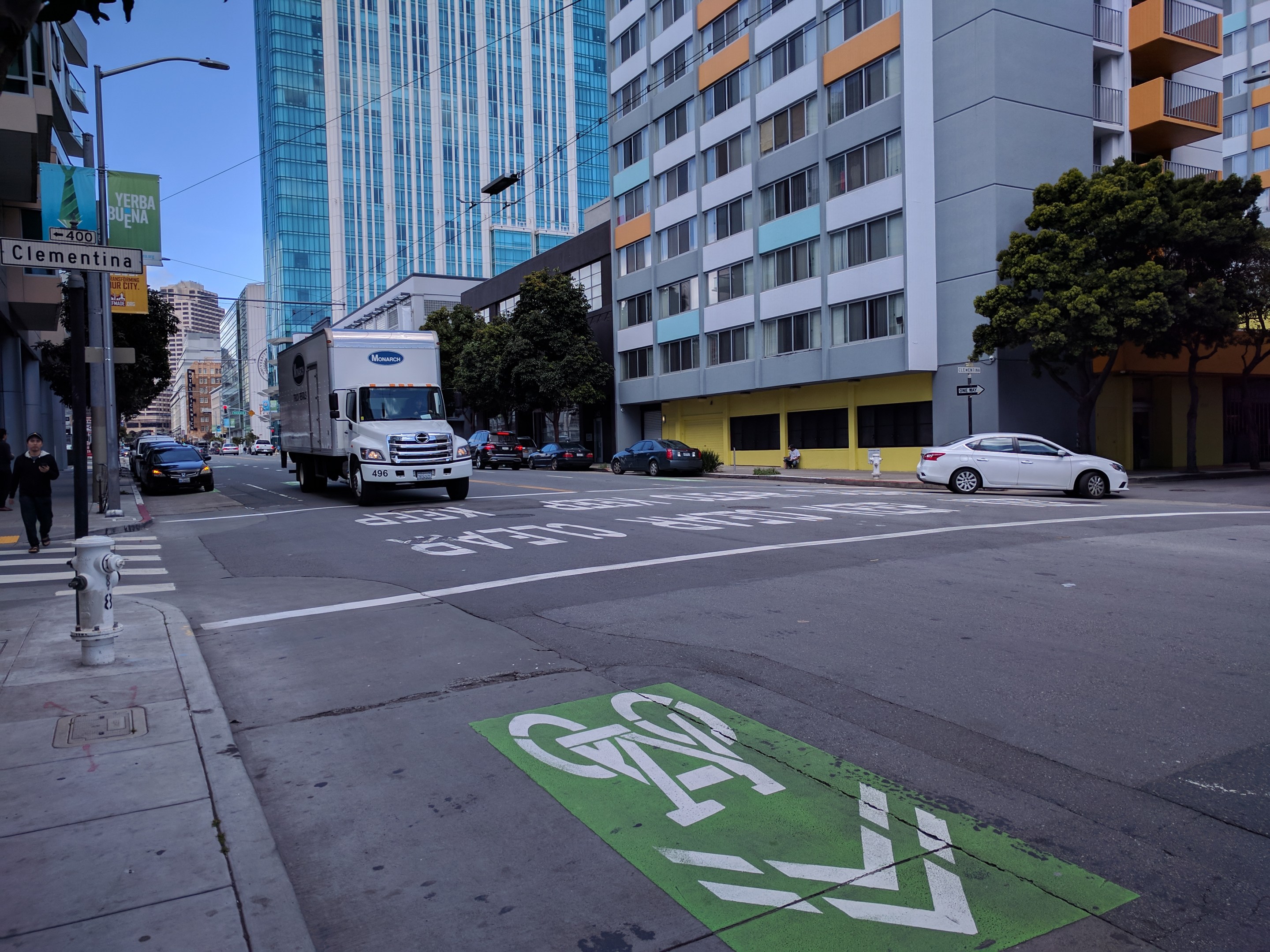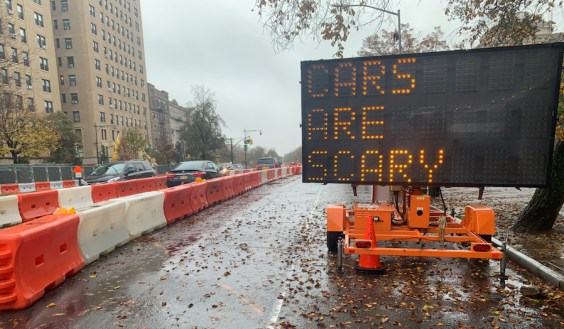Note: GJEL Accident Attorneys regularly sponsors coverage on Streetsblog San Francisco and Streetsblog California. Unless noted in the story, GJEL Accident Attorneys is not consulted for the content or editorial direction of the sponsored content.
SFMTA is designing and doing outreach for a safety and improvement project on 5th Street, one of the many notoriously dangerous streets in SoMa. The project, which will stretch from Market to Townsend, will include protected bike lanes, at least for part of the way. It will be done in two phases.
"Near term will be with buffers and flexible posts. Long term, we'll add cement buffers," explained Jennifer Molina, a planner with the agency’s livable streets division who was at an outreach table on Tuesday afternoon in front of Contraband Coffee Bar between Folsom and Howard. According to SFMTA, short-term construction should start this summer, with the concrete phase beginning in the fall of 2020.
Some of the key changes that are coming: roadway conversion from four lanes to threes, "generally with two southbound lanes," according to the SFMTA. The agency says "generally" because "two lanes in both directions will be maintained near freeway ramps at Bryant Street." In addition, there will be "continuous bike lanes for the entire corridor, including protected bike lanes for the majority [emphasis added] of the corridor."
Sections between Mission and Howard will still have lanes that put cyclists between moving traffic and parked cars (or stowed construction equipment and materials).
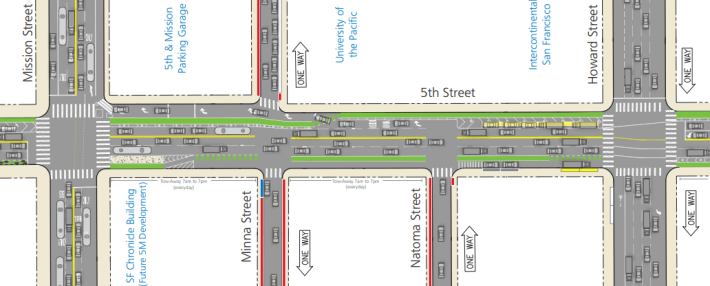
According to SFMTA's Thalia Leng, this compromise on safety was because of coming developments on that side of the street that will need the curbside to load construction materials.

Meanwhile, only a handful of people stopped by the outreach table at Contraband Coffee in the hour or so that Streetsblog was able to observe. Most were supportive. "I like it, it's great," said Bryan Klofas, who bikes once a week through the area, mostly on Folsom and Howard. He said he's glad to see any improvements. Tom Myers, who also bikes through the area, was concerned about the intersection treatments. "There isn't anything in the junction," he said. "It's really lacking."
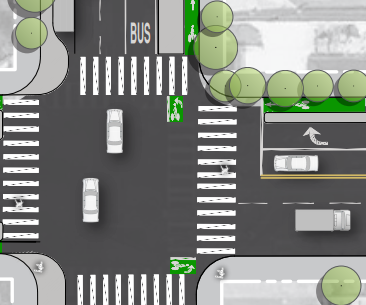
He added that SFMTA's turning treatments are dangerous, with poor sight lines for motorists and too gentle a turning radius. "Right turns for cars should be a hard angle," he said. He hopes that would get cars to slow down before turning, avoiding 'right hooking' cyclists. For that matter, he said overall speeds "should be reduced to at most 20 mph."
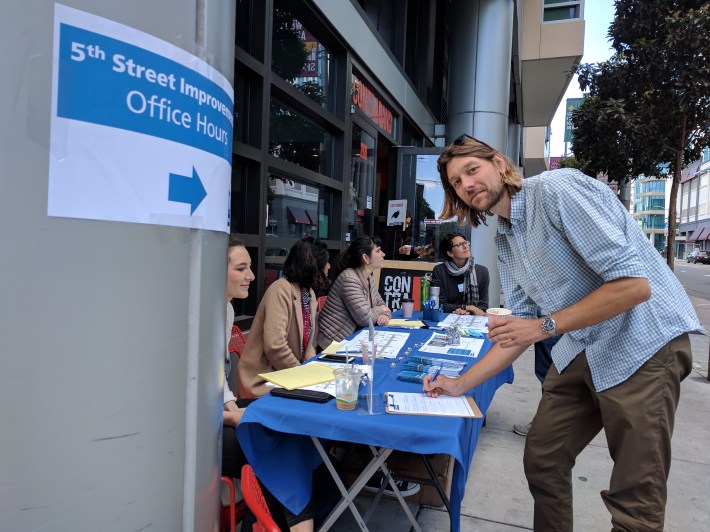
Myers is right to focus on intersection dangers, as this chart of collision data spanning from 2011 to 2016 from SFMTA's own materials on 5th Street clearly illustrates:

Meanwhile, the most sketchy intersections, arguably, are the on- and offramps of I-80. They will not receive protected intersections--and instead will just have paint and phased signals. In fact, going by the diagrams, it seems there will be very little change to the road layout at these points. Leng said they can't do a protected intersection because of the ramps and jurisdictional issues with Caltrans.
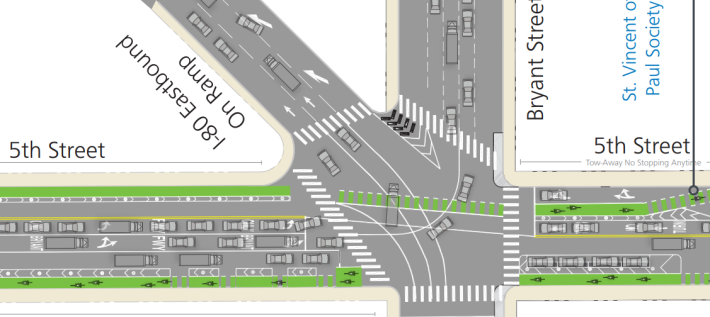
Streetsblog reached out to a source at Caltrans who, while admitting he's not directly familiar with the 5th Street project, cautioned that the state is often used as a scapegoat when cities implement deficient intersection designs. The source offered state guidelines for protected intersections (see page 8). The source said he would look into the situation on 5th and respond with more information later. Streetsblog also has an inquiry out to SFMTA for more information on how it determined Caltrans would veto protected intersections and will update this post [4-18 - see update and clarification from SFMTA at the bottom of this post]
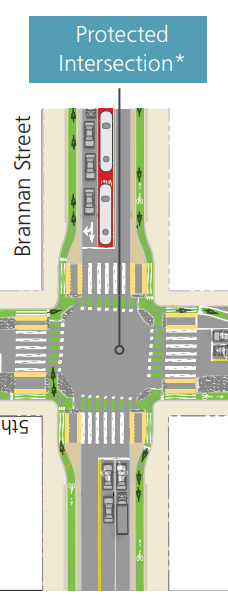
According to SFMTA's site and the information presented on Tuesday, out of the sixteen or so major and minor junctions on 5th, there will be intersection protection at Howard, Folsom, and Brannan streets, and only in the long-term design (and in coordination with the Folsom/Howard and Brannan Streetscape Projects). The rest will have mixing zones and/or phased signals.
The next meeting about 5th Street will take place on Saturday, April 20, from 10-12 p.m., also at Contraband Coffee, 250 5th Street. San Francisco. To submit a comment by email, contact Thalia Leng at Thalia.Leng [AT] sfmta.com.
Update 4/18 - Thalia Leng sent the following in response to some of the issues brought up in this article:
The event picked up a lot in the last hour, we ended up staying until about 3:30pm and had approximately 40 people in total stop by. Yes, we agree that protecting the intersections is important whenever possible on 5th Street. In the long-term design for 5th Street, we are proposing concrete island/Dutch-style protected intersections at Howard and at Brannan, and are proposing separated bike signals at many of the other intersections. In particular, we are proposing a bike signal at Bryant (highway on ramp). Separated bike signals are proposed here instead of concrete island protected intersections because it fully separates bike movements from vehicle movements and is more suitable for locations with higher volumes of vehicles (such as Bryant).
We will be working with Caltrans to obtain encroachment permits for any work completed on 5th, I’m not sure what they think about a Dutch-style protected intersection at 5th at Bryant, but again, we believe from an engineering prospective- a fully separated bike signal with its own signal/signal head is a safer solution at high volume intersections.
